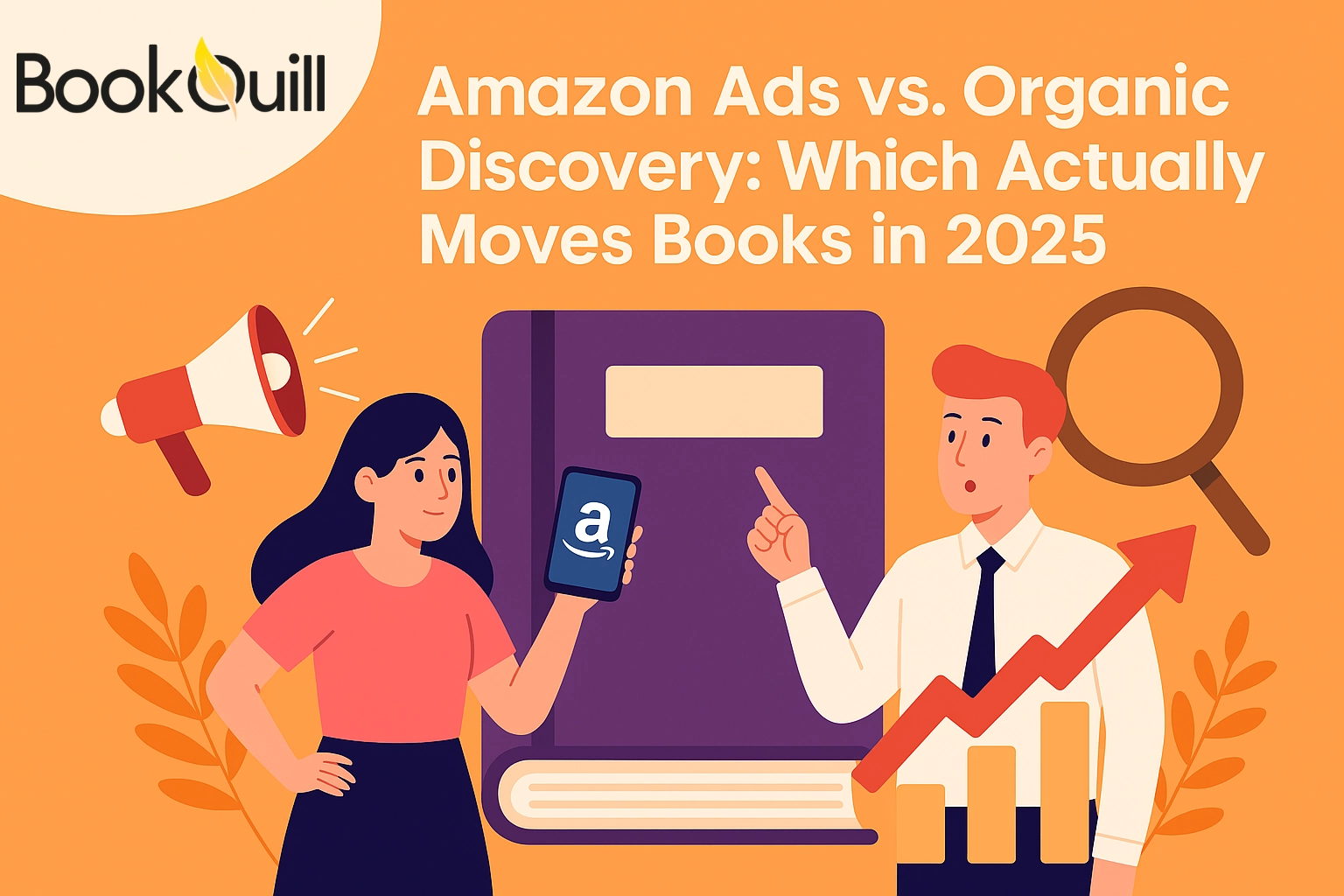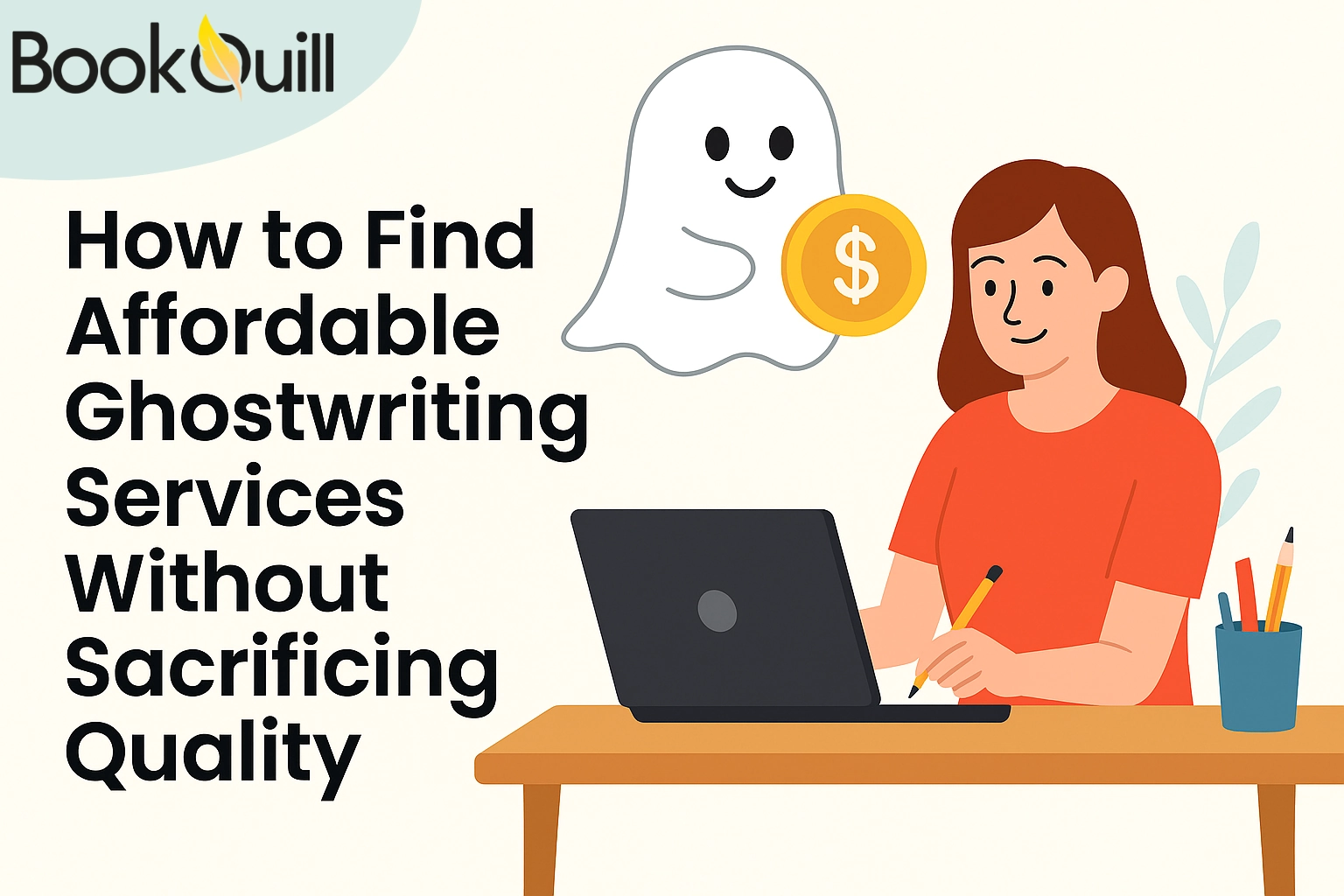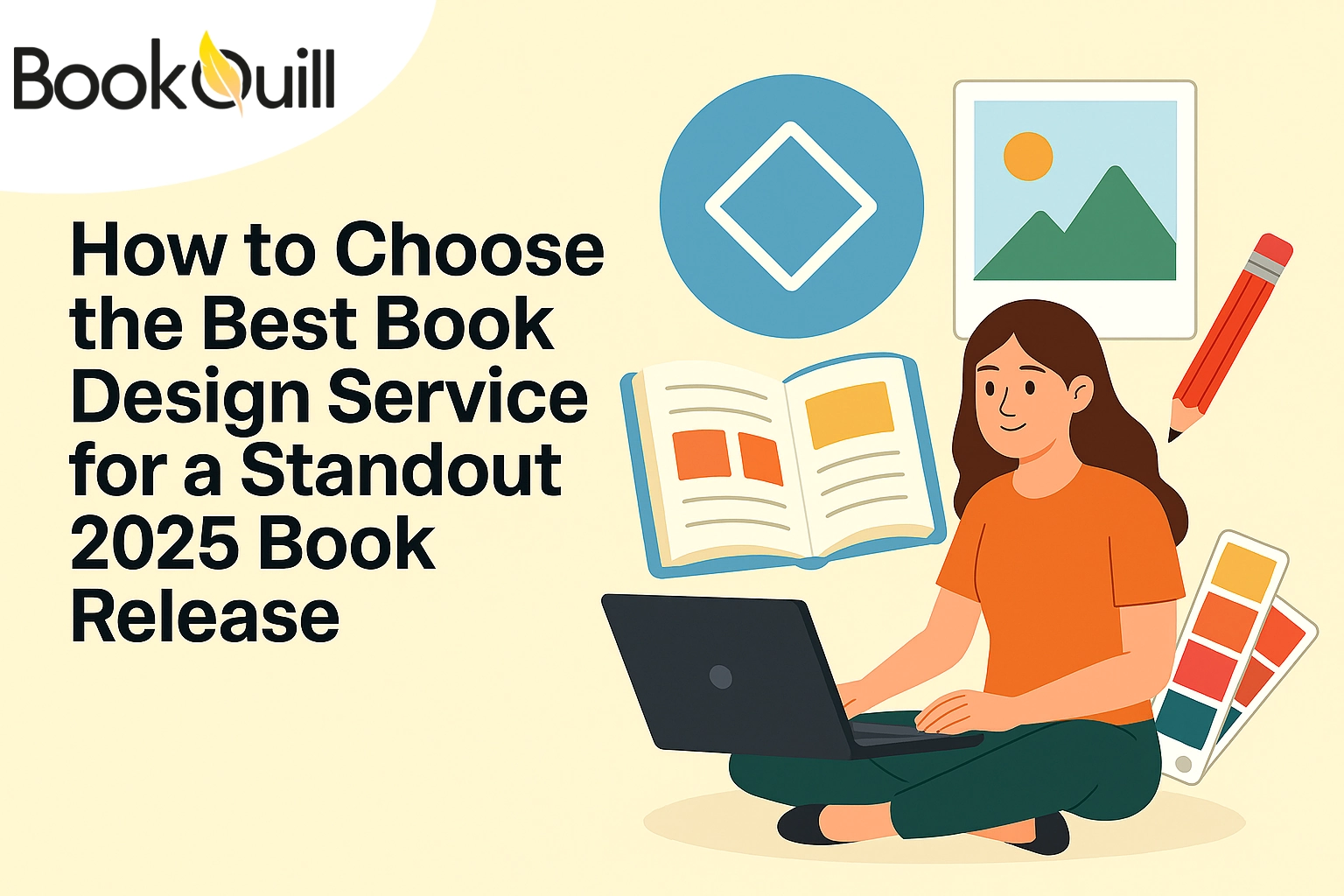Table of Contents
Explore Blogs
Trending on Ebook
Is Your Story Data-Driven? A Test for Writers Who Want to Convert & Compel
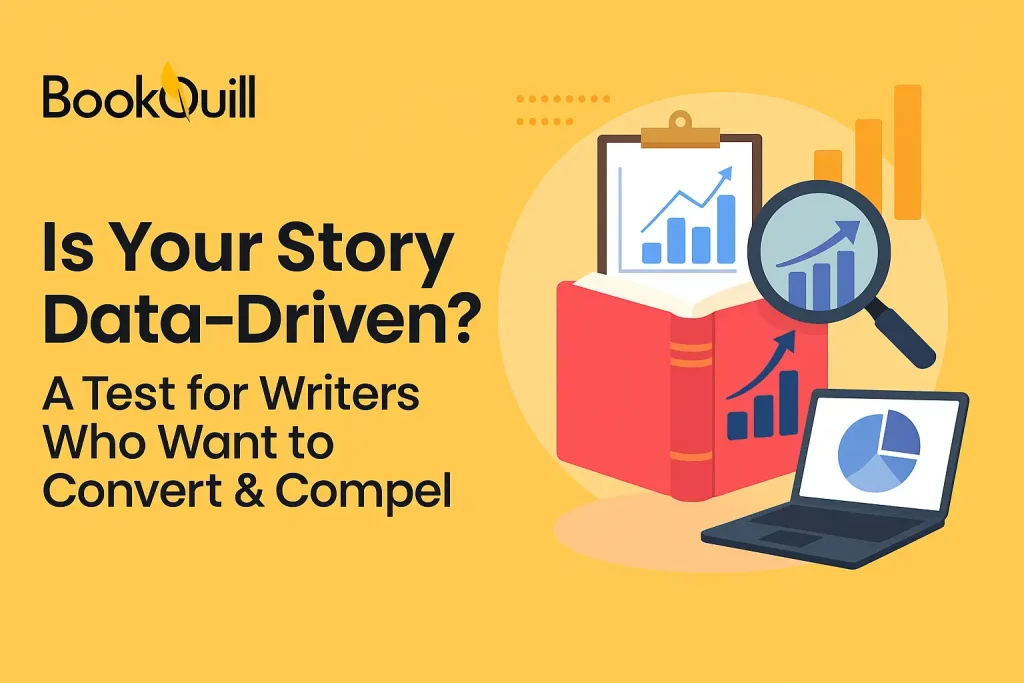
Most writers think they’re telling compelling stories. We work over every sentence, obsess over metaphors, and refine our writings until they shine. But here’s the reality! Just because something reads beautifully doesn’t mean it’s working. And by working, we mean… is it actually converting? Is it convincing? Is it compelling?
That’s where data-driven storytelling truly transforms your strategy.
Data-driven? You might be imagining graphs and spreadsheets right now. Relax. This isn’t about covering your story in charts. It’s about mixing emotion with facts to create a story people care about and believe in.
What is data storytelling, exactly? It means using relevant facts, behavior patterns, and insights to shape stories that connect and perform. Storytelling that is actually targeted and focused.
So today, we’re not just talking theory. We’re handing you a litmus test. A self-check. A simple but powerful way to find out if your writing is doing its job or just sounding nice. If you’re a writer, marketer, author, entrepreneur, or someone who simply wants their words to matter, this one’s for you.
Key Takeaways
- Data-driven storytelling combines emotion and evidence to create content that converts.
- Writers who understand what data storytelling is can write more persuasive narratives by backing emotional hooks with real-life proof.
- Strategic storytelling rooted in audience behavior, stats, and clear goals is what separates average content from high-performing stories.
- Using data storytelling and visualization helps readers absorb information faster and remember key insights.
- Even the best eBook writing services need to prioritize relevance, clarity, and credible data to keep readers engaged and build trust.
Is It Data? Is It a Story? It’s Both!
Let’s clear something up first. Data storytelling is not about bombarding your audience with spreadsheets, bar graphs, and boring percentages that bore them. It’s about taking cold, hard data and breathing life into it.
The definition of data storytelling is simple but powerful. It’s the art of turning data points into a coherent and emotionally engaging narrative. Think of it like you are not just showing what happened, but why it matters, what to do about it, and how your reader is connected to it.
In practice, data-driven storytelling combines:
- Facts and figures (the data)
- Narrative context (the story)
- Visual cues (sometimes, but not always)
For example, instead of saying “56% of readers abandon a book before chapter 3,” a data storyteller might say:
“More than half your audience quietly closes your book before chapter three. Not because it’s bad, but because it never gave them a reason to stay.”
Same stat. But way more compelling!
Today, the combo of emotional pull and factual backbone is what separates forgettable content from the stuff that sticks. No matter what you’re writing, data without a narrative is dry and forgettable. If there’s no evidence, emotion won’t be enough. But together? They create the kind of message people believe and act on.
That’s why the most impactful stories coming out of premium book writing help services aren’t just beautifully written, they’re strategically aligned with what readers care about, what they believe, and what they can prove to themselves.
Because honestly, people don’t buy with logic. But they justify with logic. A good data-driven story gives them both.
Why Writers Need Data-Driven Storytelling More Than Ever
We live in an era of endless content. Blog posts are published by the thousands every hour. Social media is a non-stop shout-fest. Ebooks are everywhere, and there are too many to count. In all this noise, how does your story stand out?
Here’s the secret! It’s not just how well you write, it’s how strategically you write.
That’s where data-driven storytelling earns its keep. Because in 2025, simply being “creative” isn’t enough. Readers and buyers are skeptical, distracted, and data-literate. They’ve seen it all, and they’re craving content that respects both their emotions and their intelligence.
For example, let’s say you’re writing an eBook to sell your coaching program. Which message do you think lands harder?
- Version A: “People love coaching because it helps them grow.”
- Version B: “87% of clients report measurable income growth within six months of starting weekly coaching.”
They say the same thing. One just has the numbers to prove it. And that proof builds trust!
The best content today combines emotional storytelling with evidence-backed claims. Whether you’re launching a product, sharing a personal essay, or writing a lead-generating eBook, the combo of feeling and fact is what gets readers to stop scrolling and start paying attention.
That’s why smart authors and entrepreneurs are turning to affordable eBook writing services that understand this balance. Not just beautiful words, but data-infused narratives that convert.
And if you’re thinking, “Well, I just want to write something people care about,” here’s the good news! Data helps you figure out what they already care about and how to serve it up in a story that sticks.
The Anatomy of a Data-Driven Story
Okay, you’re in. You like the idea. But what does a data-driven storytelling actually look like? Is it a formula? A framework? A spreadsheet in disguise?
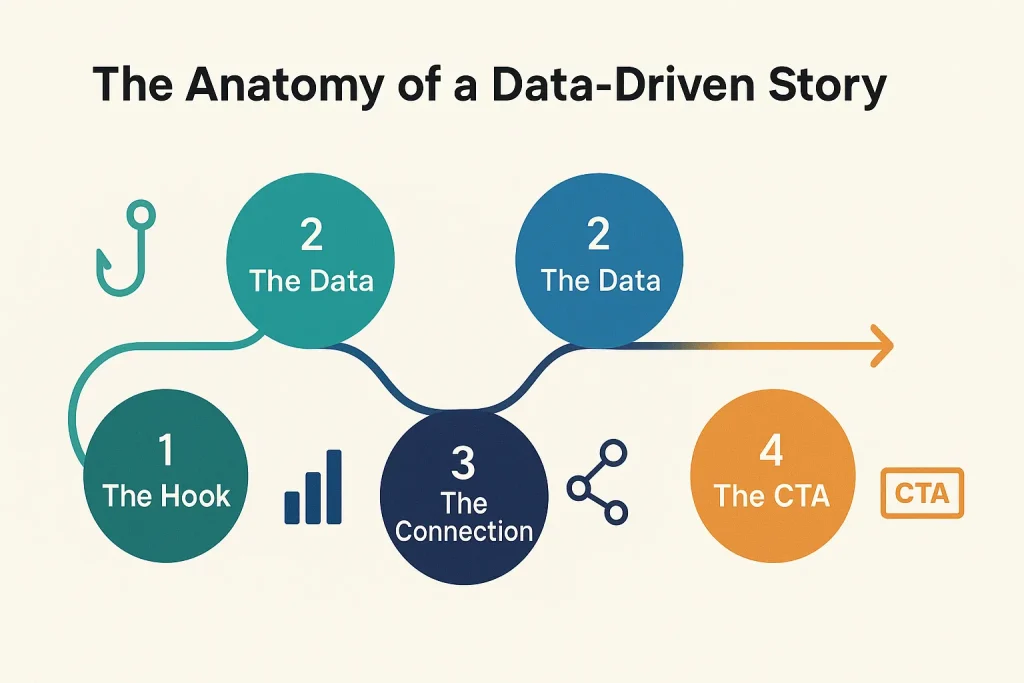
Not quite! But it does have a backbone. And like any good story, it needs structure. What is this structure?
1. The Hook
This is the emotional entry point. A surprising fact, a relatable struggle, a bold question, something that grabs the reader and says, “Hey, this is about you.” For example:
“Most small business eBooks fail, not because the writer isn’t talented, but because they forgot to back up their pitch with proof.”
Boom. You’re in.
2. The Data
This is where you insert meaningful, credible, and relevant data to support your message. It could be a stat, a case study, a trend, or a quote from a trusted source. Why is it important? Because this not only moves the story forward but also makes it look smart.
Example:
“According to a recent study, 65% of readers say they trust content more when it includes data from verified sources.”
3. The Connection
This is where you tie the emotion to the evidence. You help the reader see how the data supports their world, their needs, and their goals. It’s the “so what?” moment that makes the story stick.
“So if your eBook doesn’t have that kind of credibility, readers might click away, even if it’s beautifully written.”
4. The CTA
What do you want the reader to do next? Share? Buy? Subscribe? Think differently? Every data-driven storytelling should end with a purpose. This is where conversions happen.
And yes, this is exactly the structure used by the best eBook writing services when writing conversion-focused books and reports. Whether you’re building an audience, selling a service, or leading a movement, this structure ensures your story doesn’t just sound good, but performs.
The Test: Is Your Writing Actually Data-Driven?
Time for some tough love. You might think you are writing persuasively. But is your content actually grounded in anything more than clever phrasing and vibes?
Let’s find out.
Below is your data-driven storytelling self-test. Nothing is required, just your honesty! For each question, give yourself one point for “yes” and zero for “no.”
Ready?
The 10-Point Self-Test for Writers Who Want to Convert & Compel
- Do you support most key claims in your writing with data, examples, or research?
- Do you know who your audience is and what kind of data they care about?
- Do you track performance metrics like engagement, downloads, clicks, or reads for your content?
- Do you ever run A/B tests on your headlines, CTAs, or email subject lines?
- Have you used customer reviews, testimonials, or case studies to strengthen your narrative?
- Do you check that your stats are relevant, recent, and sourced?
- Do you make use of visual aids (charts, infographics, screenshots) when explaining complex information?
- Do you revise content based on data like bounce rates, time-on-page, or conversion stats?
- Do you ever use industry reports or surveys to validate your points?
- Do you approach storytelling with a clear goal?
Scoring Breakdown
0–3: Needs Work
You might be relying too much on “feel-good” writing. It’s time to balance your style with some strategy.
4–6: On the Right Track
You’re making an effort, and that’s huge. Now let’s refine it and add consistency.
7–10: Strategic Storyteller
You’re not just writing, you are persuading with purpose. Keep optimizing and scaling up.
Writers who work with the best book writing help services often have these steps built into the process. Why? Because professional writing that actually converts is rarely a happy accident. It’s deliberate. It’s tested. It’s tracked.
The good news? You don’t need to be a data scientist to write better. You just need to write smarter.
Where to Find the Right Data for Your Story?
By now, you’re probably thinking: “Okay, I get it, data-driven storytelling is powerful. But where am I supposed to get all this data?”
Honestly, the best data is already around you. You just need to know where to look.
Let’s explore the most valuable sources of storytelling data and how writers can use them.
1. Web & Content Analytics
Start with what your readers are already doing.
Use tools like Google Analytics, Hotjar, or even social media insights to track:
- What pages do they linger on?
- Where they bounce
- What headlines get clicks?
That’s all storytelling data. It’s behavioral truth.
2. Customer Reviews and Testimonials
These are gold for qualitative insights.
Read reviews on Amazon, Yelp, Reddit, or your own blog. What are people feeling? What phrases do they repeat?
Great copywriters often swipe phrases directly from real reviews.
3. Polls, Surveys & Social Listening
Ask your audience questions directly.
- Run polls on Instagram or LinkedIn
- Use Typeform or Google Forms for mini-surveys
- Check comments on competitor content or relevant forums
You’ll learn what people actually want to know, feel, or fear, which makes for excellent narrative fuel.
4. Industry Reports & Case Studies
Need numbers? Sites like Statista, HubSpot, Nielsen, or even your niche trade publications are loaded with fresh data.
Just make sure the source is credible, up-to-date, and relevant to your audience.
5. Internal Data or Experience
If you are writing for a brand or yourself, don’t overlook your own:
- Email open rates
- Best-performing blog posts
- Case studies from your business
- Client feedback
Writers working with affordable eBook writing services often benefit from this research already being done for them. These services dig into the audience, industry, and behavior patterns before putting a single word on the page because, what’s the point of a story if it doesn’t speak to the right person at the right time?
And that’s the goal here! To use data not to replace creativity, but to guide it.
Data Storytelling and Visualization: Show, Don’t Just Tell
Have you ever read a stat like “Email open rates dropped 4.5% year-over-year” and felt… nothing?
Exactly. Numbers alone rarely move us.
But imagine this:
“In just 12 months, your audience went from ‘I can’t wait to read this’ to deleting your newsletter without opening it. That’s the reality behind a 4.5% drop in open rates.”
Same number. Entirely different experience.
That’s the touch of data storytelling and visualization.
And wait, this isn’t about turning your story into a science paper. It’s about making meaning visible so your readers not only get the message, but they feel the impact.
Why Visualization Works
The human brain processes visuals 60,000x faster than text, which is why stories supported by graphs, infographics, or even screenshots are more engaging and more convincing.
When writing about trends, comparisons, or processes, a clear chart or visual metaphor can turn a forgettable piece into something truly memorable.
But don’t panic, you don’t need to be a graphic designer.
Even a simple:
- Before/after chart
- Timeline illustration
- Pie chart of spending habits
- Or an annotated image of your process
…can do wonders for clarity and impact.
Visualization in Action
Let’s say you’re writing an eBook on digital marketing strategies. Instead of listing average ROI stats, you could create a bar graph showing which channels perform best and paired with real case studies.
Suddenly, your eBook isn’t just informative, it’s persuasive.
This is why premium eBook writing services often pair writers with visual designers. Back your story with solid data, and it gains authority. Visualize that data well, and it drives results.
And for authors or marketers thinking, “I’ll just describe it in words,” remember, you’re not writing a riddle. You’re writing to convert and compel.
Let the data speak for itself, loud and clear.
Conclusion
We’ve said it before, and we’ll say it again! Beautiful writing alone isn’t enough anymore.
Your words might sound poetic. They might even go viral. But if they don’t make people believe, act, or remember, what’s the point?
That’s the new standard. That’s the challenge for today’s writers, marketers, and authors. Today, writers need more than emotion. They need a strategy, too. And that’s exactly what data-driven storytelling offers: a way to anchor your message in something more than emotion.
It doesn’t mean becoming a robot. It means becoming a strategic communicator. One who knows how to turn insights into impact. One who’s willing to ask, “Is this story based on feeling… or fact?”
Now, if you took the self-test earlier and realized you’ve got some work to do, that would be good. That means you’re ready. You’ve got the spark to level up from “nice narrative” to high-converting, can’t-look-away storytelling.
Do you need a partner for that process?
Maybe to write an eBook that builds your brand or a lead magnet that gets results, consider teaming up with professionals who know how to combine storytelling with strategy. Our best book writing help services are built to do exactly that, creating stories that don’t just sound good, but sell, stick, and scale.
Frequently Asked Questions
What is Data Storytelling, and Why Does It Matter for Writers?
Data Storytelling combines facts, visuals, and narrative to create engaging content that builds trust and drives action. It’s essential for anyone using professional writing services.
How Can Data-Driven Storytelling Improve My EBook or Content?
It makes your writing more credible and persuasive by using real stats, insights, and audience behavior, boosting conversions and engagement.
Do I Need Design Skills for Data Storytelling and Visualization?
Not at all. Even simple charts or visuals can enhance your story’s clarity. Many affordable eBook writing services include visualization support to help you succeed.
Can I Still Be Creative While Using Data in My Writing?
Yes! The goal is to combine creativity with strategy. Data storytelling gives your emotional writing a factual backbone without sacrificing voice or style.
Where Can I Find Help with Creating a Data-Driven EBook or Manuscript?
Working with the best book writing help services ensures your content is both compelling and conversion-ready, rooted in research, strategy, and storytelling.
About Author
Hi My name is Micheal Adams, When I am not watching horror movies and helping my kids with homework or reading my favorite fantasy/supernatural novels – I’m writing to guide aspiring authors. I focus on exploring and simplifying both the technical aspects and the often-overlooked details of book writing and publishing so I can empower new writers to climb the Amazon bestseller list and connect with more readers.


